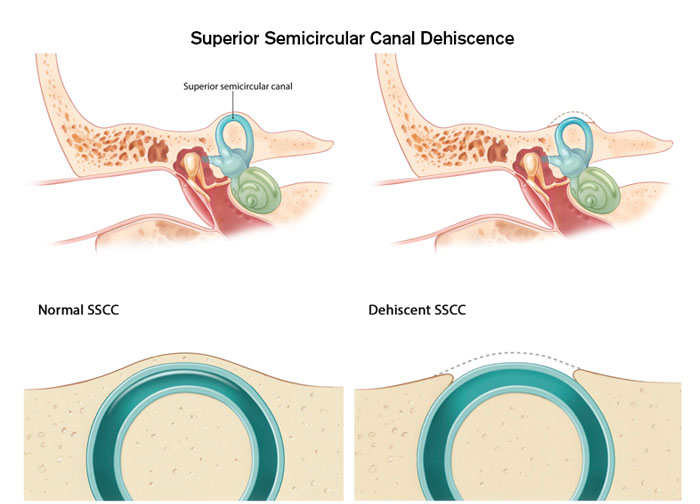Notice of privacy incident at Brigham and Women's Faulkner Hospital Learn More
Header Skipped.
Notice of privacy incident at Brigham and Women's Faulkner Hospital Learn More
Header Skipped.
Otolaryngology:
Ear Conditions
Superior semicircular canal dehiscence (SSCD) or Minor’s Syndrome is a rare medical disorder of the inner ear which can lead to hearing loss and balance issues. The dehiscence, or opening, is caused by a thinning or complete absence of the part of the temporal bone overlying the superior semicircular canal of the vestibular system, which is essential to your sense of balance and spatial orientation. Only recently identified by Lloyd Minor, MD in 1998, this disorder also causes hypersensitivity to sound.
Otolaryngologists at Brigham and Women’s Faulkner Hospital treat diseases, conditions and dysfunctions that affect hearing and balance including superior semicircular canal dehiscence.
Although the exact cause is not known, current medical evidence suggests that this rare defect, or susceptibility, is congenital (or inborn). An additional theory is an increase in intracranial pressure (inside your skull). There are also numerous cases of symptoms arising after physical trauma to the head. Histology of human temporal bones describes a dehiscent or thin overlying bone in 1-2% of the population.

Diagnostic testing should be done by an otolaryngologist and otologist who have experience with this condition. An otolaryngologist will perform a complete history and physical examination.
Several diagnostic methods are used to diagnose SSCD.
Treatment for SSCD can only be determined after a comprehensive medical examination and full work up by an otolaryngologist and otologist who have experience with this condition.
You will receive a thorough diagnostic examination to evaluate if you have superior semicircular canal dehiscence and determine what course of treatment is needed. Careful monitoring and the involvement of an experienced otolaryngologist are important to the successful outcome for patients with ear, nose and throat disorders and conditions.
If you are having surgery or a procedure, you will likely be scheduled for a visit to the Weiner Center for Preoperative Evaluation for pre-operative information and tests.
The day of surgery, you will be taken care of in the operating room by otolaryngologist, anesthesiologists and nurses who specialize in surgery for patients with superior semicircular canal dehiscence. After surgery, you will go to the post-surgical care unit where you will receive comprehensive care by experienced surgical and nursing staff.
Brigham and Women’s Faulkner Hospital provides a multidisciplinary approach to patient care by collaborating with colleagues who have extensive experience in diagnosing and treating ear, nose and throat disorders and conditions. In addition, patients have full access to Brigham and Women's Hospital's world-renowned academic medical community, with its diverse specialists, and state-of-the-art facilities.
Offering comprehensive medical, surgical and psychiatric care as well as complete emergency, ambulatory and diagnostic services to residents of southwest Boston and the surrounding suburbs.
Learn more about BWFH